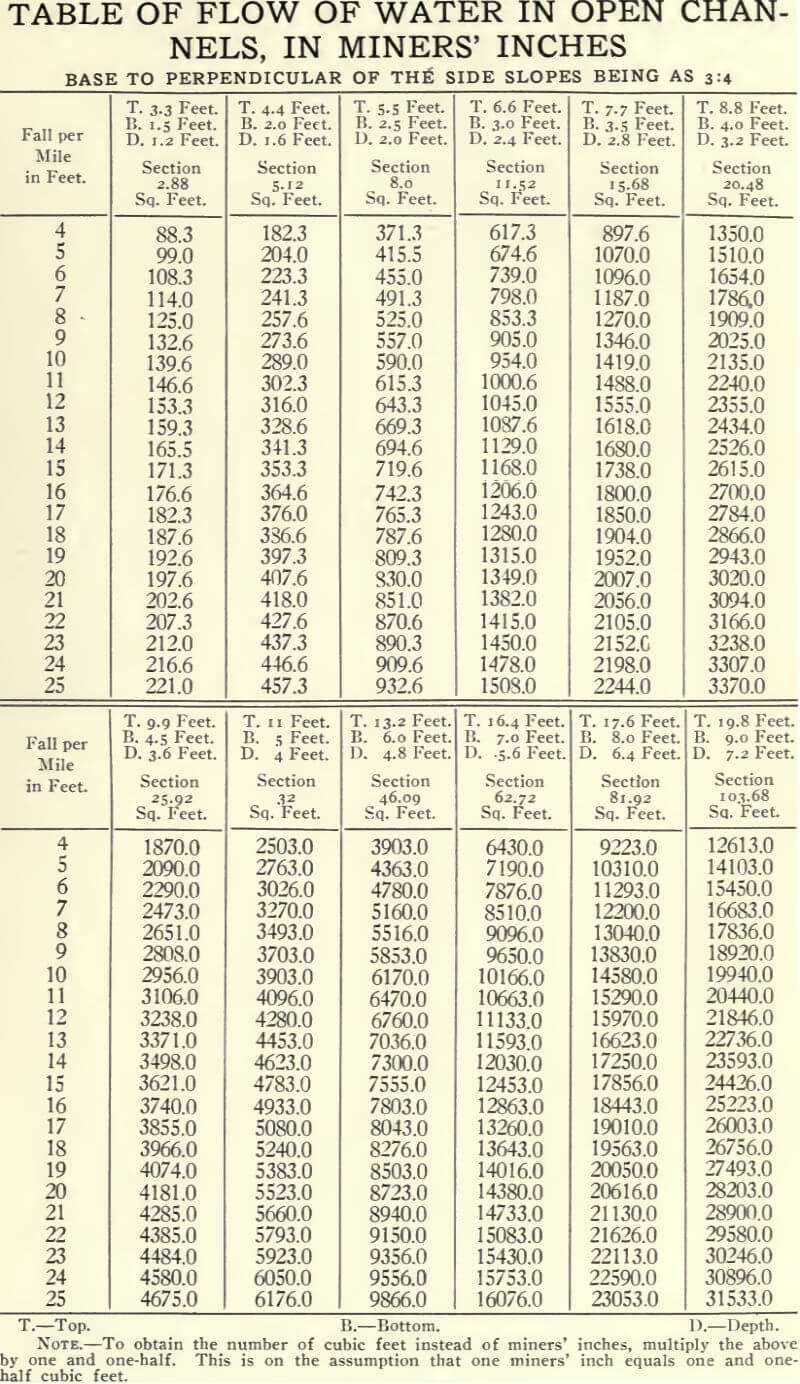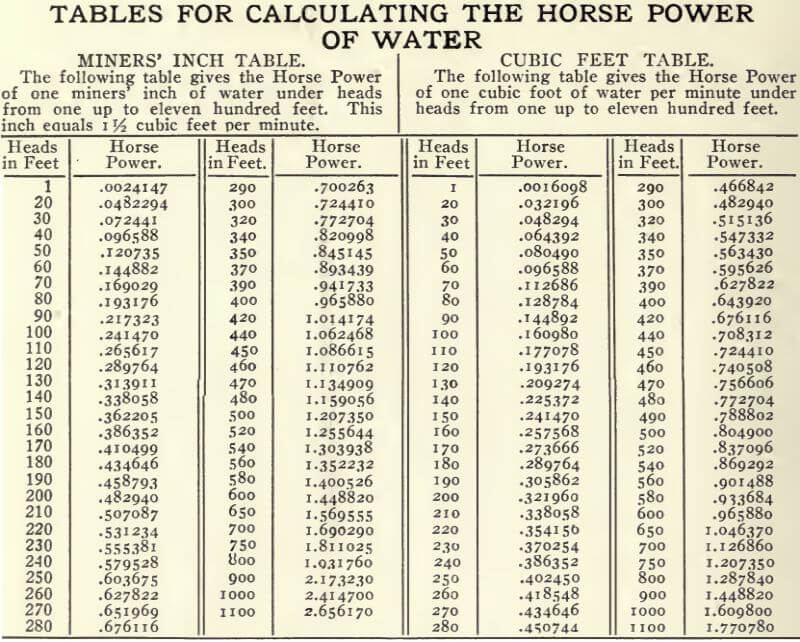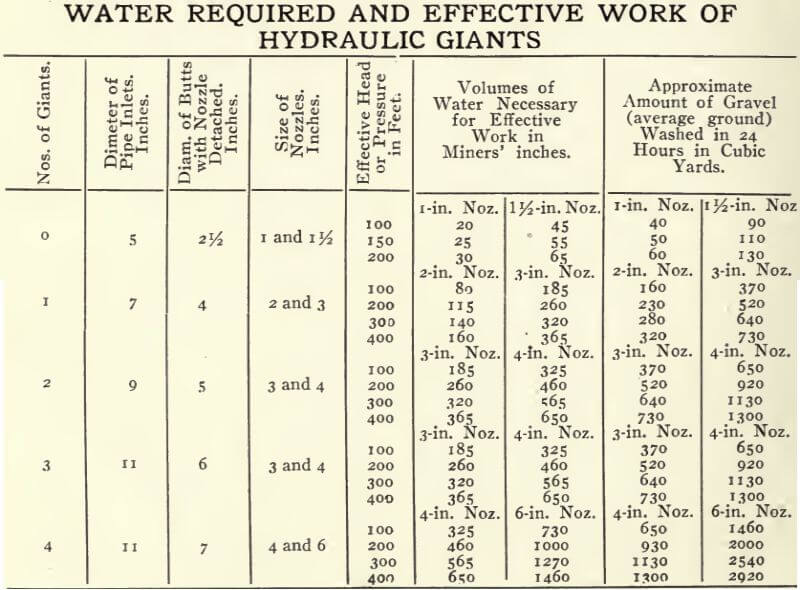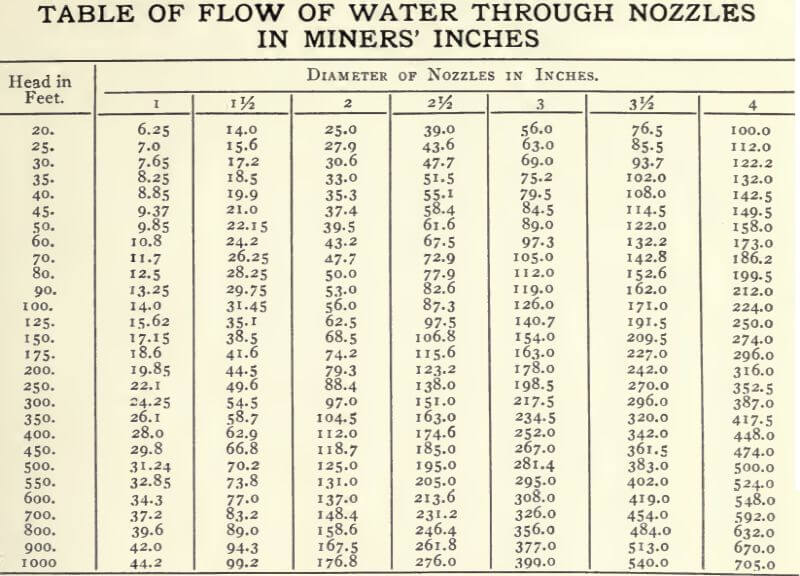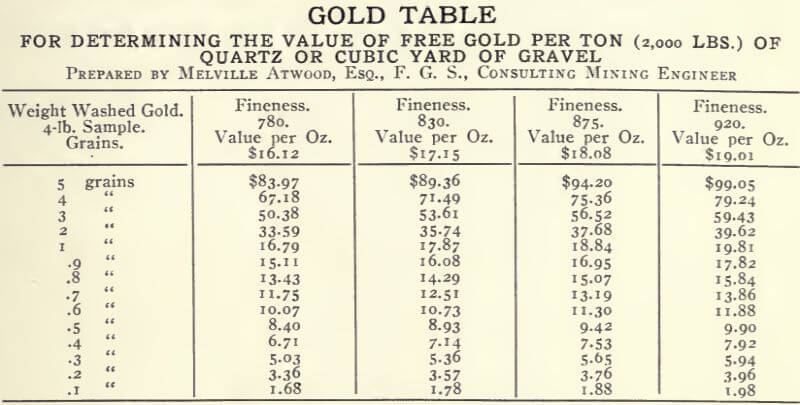A Miner’s Inch is a measure for flow of water, and is the quantity of water that will flow in one minute through an opening one inch square in a plank 2 inches thick under a head of 6.5 inches to the center of the orifice. This is equivalent, approximately to 1.2 cubic feet, or 9 gallons per minute. This measure is not the same for all states, as some use a different head.
To determine the area of a required pipe, the volume and velocity of water being given, multiply the number of cubic feet of water by 144 and divide the product by the velocity in feet per minute.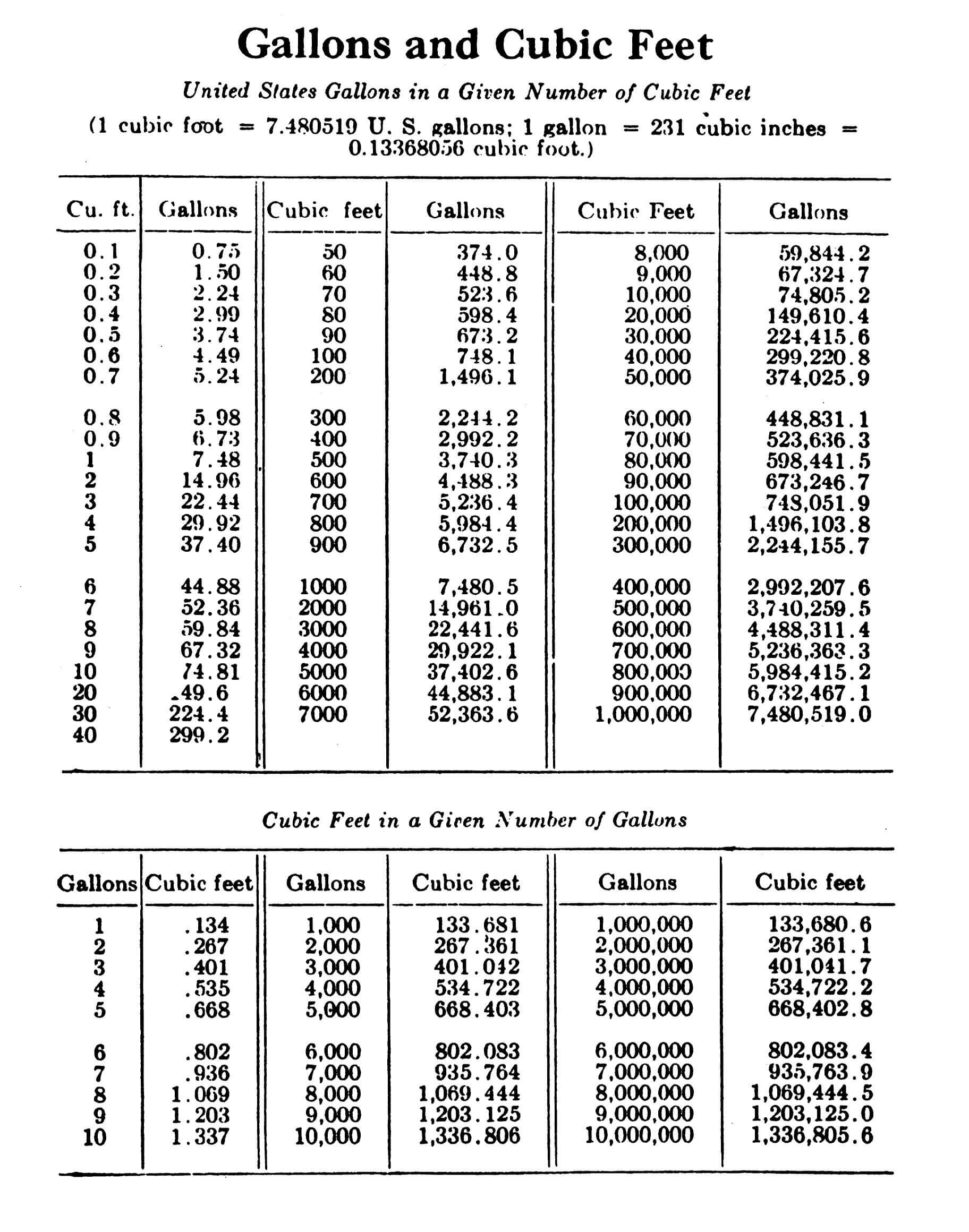 Miner’s inch.- Western placer miners usually measure and think of water in terms of miner’s inches. In California and Montana, as established by law, 40 miner’s inches equals 1 cubic foot per second; in Colorado the legal ratio is 38.4 to 1. Forty miner’s inches to the cubic foot per second is generally accepted throughout the West; this value of the miner’s inch is used in this paper. A miner’s inch as used here equals 11.22 gallons per minute; 1 cubic foot equals 7.48 gallons.
Miner’s inch.- Western placer miners usually measure and think of water in terms of miner’s inches. In California and Montana, as established by law, 40 miner’s inches equals 1 cubic foot per second; in Colorado the legal ratio is 38.4 to 1. Forty miner’s inches to the cubic foot per second is generally accepted throughout the West; this value of the miner’s inch is used in this paper. A miner’s inch as used here equals 11.22 gallons per minute; 1 cubic foot equals 7.48 gallons.
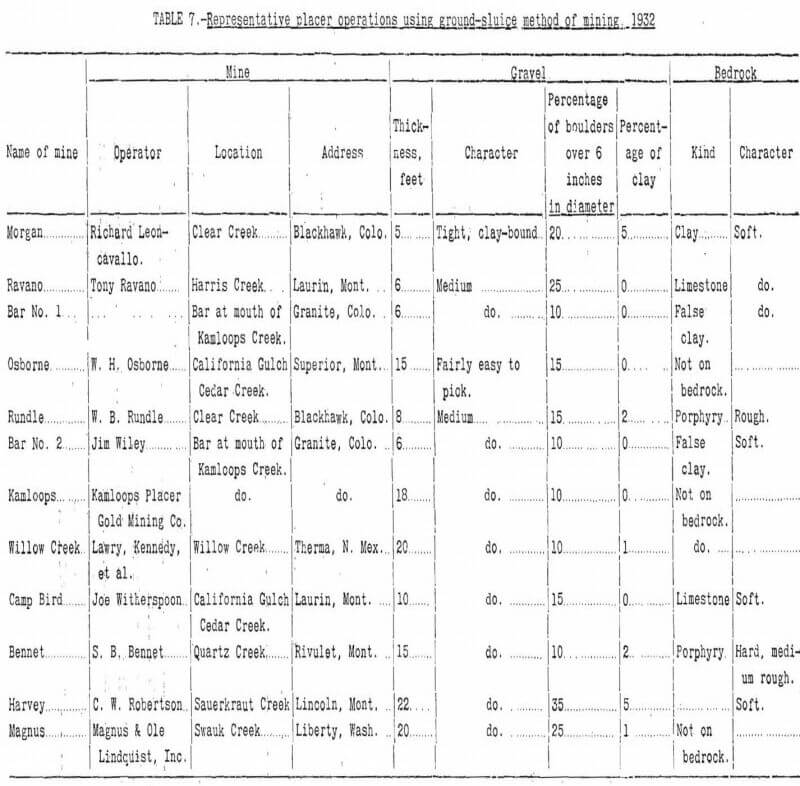
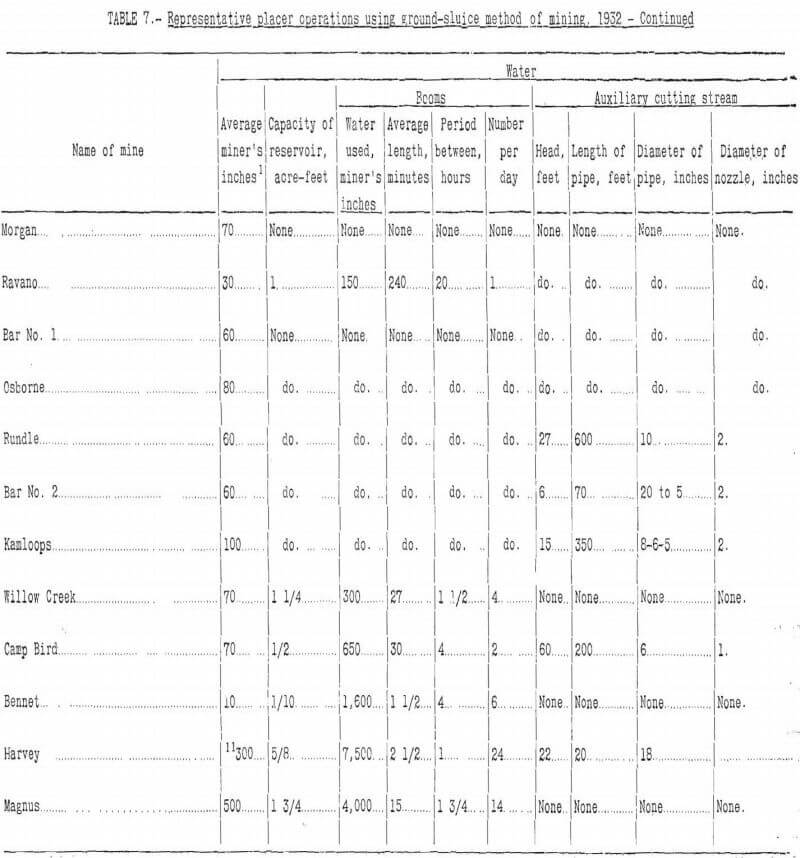
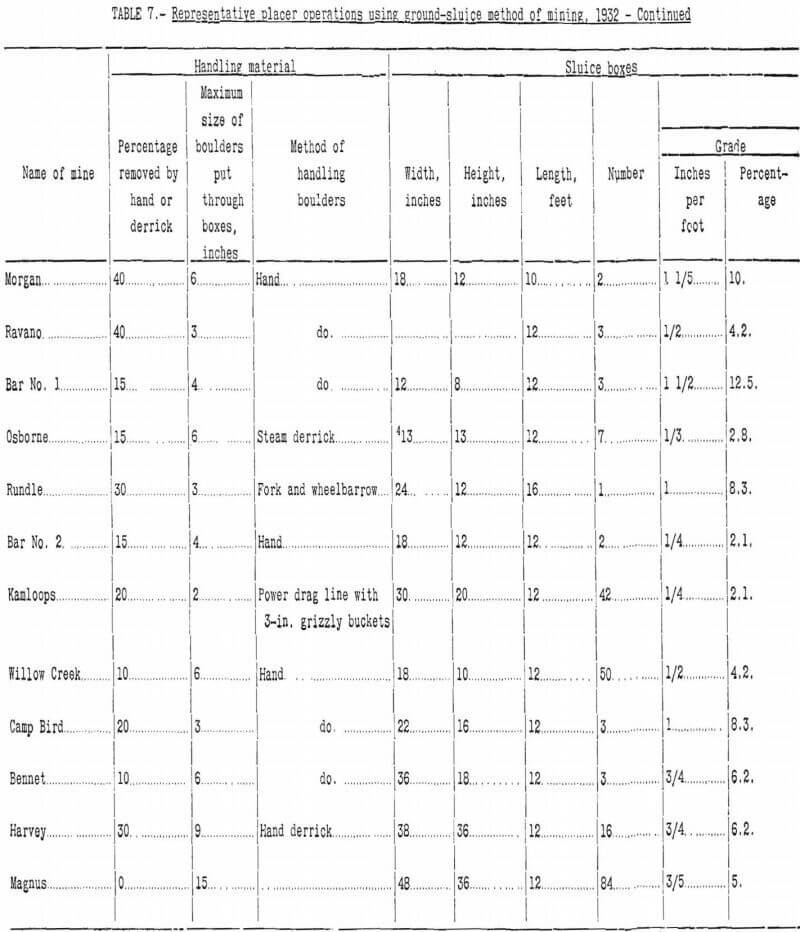
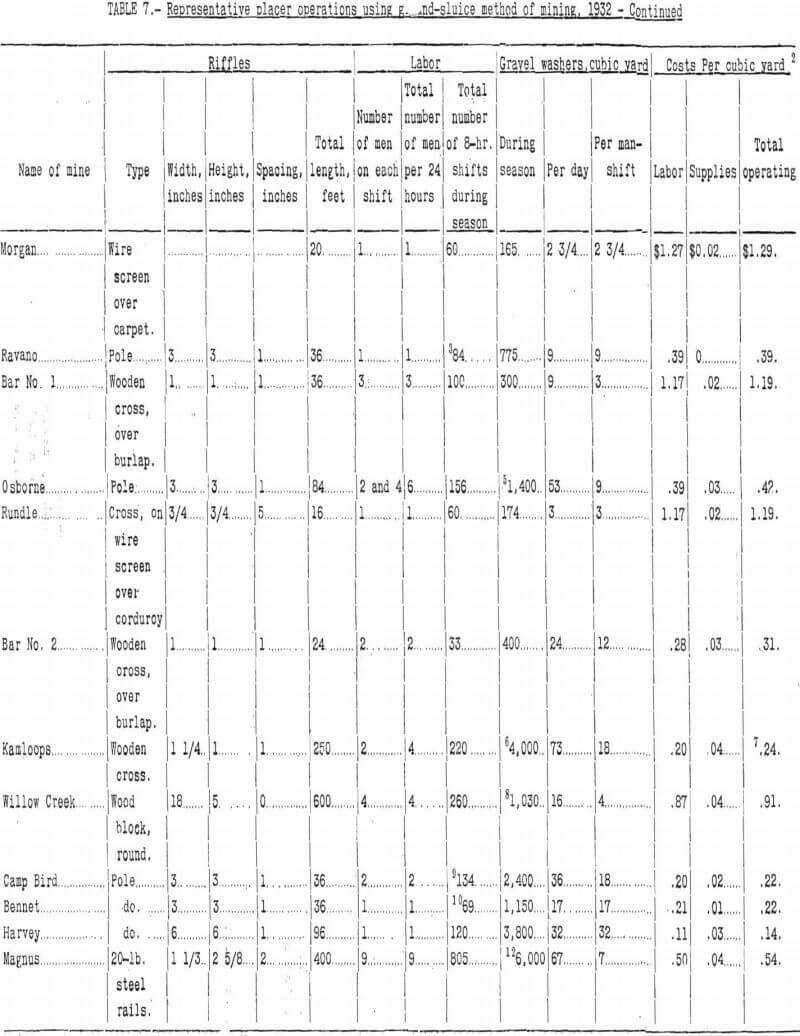
Miners’ Inch Measuring Box
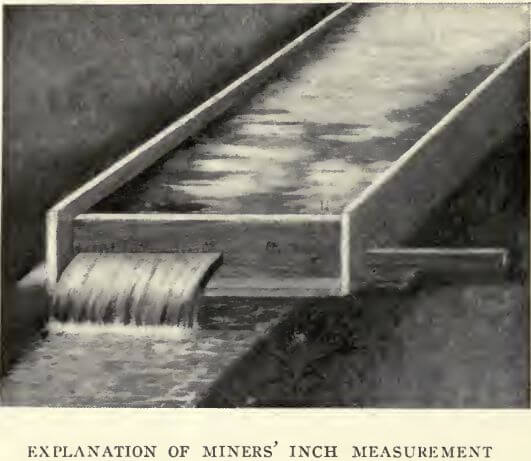
The term “miners’ inch” is of California origin, and not known or used in any other locality, it being a method of measurement adopted by the various ditch companies in disposing of water to their customers. The term is more or less indefinite, for the reason that the water companies do not all use the same head above the center of the aperture, and the inch varies from 1.36 to 1.73 cubic feet per minute; but the most common measurement is through an aperture two inches high and whatever length is required, through a plank 1¼ inches thick, as shown in cut. The lower edge of the aperture should be two inches above the bottom of the measuring box, and the plank five inches high above the aperture, thus making a six-inch head above the center of the stream. Each square inch of this opening represents a miners’ inch, which is equal to a flow of 1½ cubic feet per minute.
